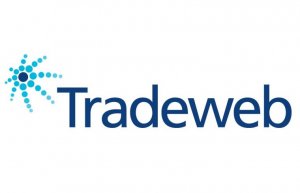So what exactly is the IB problem? Op-Ed.
The level of mistrust that now blights the introducing broker model means that the IB and the provider are at odds to each other, and therefore neither party can grow that relationship to the max, says Meir Velenski

A very longstanding and widely recognized method of streamlining a brokerage business has been via relationships with introducing brokers (IBs), especially in regions of the world in which clients are loyal to practitioners whom they trust, whether it be to refer their electronic trading business to a reputable brokerage, or to manage portfolios.
In its infancy, this model was a perfect solution to the expensive and ineffective procedures involved in onboarding direct clients via banner campaigns, which resulted in less than 1 percent conversion in many cases, and a short client lifetime value due to the absence of any understanding of the customer’s requirements, whereas an introducing broker whose intellectual property is a steadily cultivated book of good quality clients was a multi-faceted benefit to retail brokerages.
In short, the onboarding costs were massively reduced, new regional presences easy achieved and longevity of clients massively increased.
Nowadays, however, things are somewhat different.
Both sides are pulling in different directions, unless both parties are benefiting from the B-Book model and both want client losses to stack up.
Even without the above B-book model (making profits from client losses) the management of that relationship is lacking understanding, especially from the CFD/FX provider.
How does the Provider see the relationship
For those who don’t really grasp the issue , I will shed some light on the view from the corporate side.
The IB from the corporate side is viewed s a low cost/ free introducer to the Provider for some revenue share.
Providers do not handle IBs correctly and see them as the lower, desperate one man bands that introduce 6/7 clients per annum to FX / CFD firms.
The poor vision and poor approach by the providers in developing that relationship is a base for mistrust.
The level of mistrust means that the IB and the Provider are at odds to each other, and therefore neither party can grow that relationship to the max.
Spread model
Providers loathe sharing profits (often client losses). Considering that the spread is nil cost to the firm to purchase , as they set their own spreads, this is the route they offer most IBs.
What this means in effect , is that the IB needs to find clients that are “racey” and gamblers on markets to hit very high volumes. The high volumes will then generate commissions based on the spread paid, thus providing the IB with income.
For example : A client trades $10 per point in the S&P.
The spread is 1 pip so the client pays $10.00 in spread . The IB will receive an agreed amount if that $10.00 spread, thus giving him Commissions.
The larger the trade or the more the client trades produces commissions for the IB .
However , the more the client trades- the probability of losing increases, which is great for the B-book firms as they profit from the client losses.
This causes a dilemma . The IB wants commissions , so he wants the trader to trade a lot. The Provider / B-book operator , wants high volumes to generate business and losses.
So in the end the client has one side that wants home to lose, the B-Book provider and has the IB hoping he does not lose.
Other fees
In addition to the spread , clients have the overnight funding charges and interest payments to pay in order to finance their trades. This also knocks the equity and cash available to the trader. The IB may get part of these fees , but again providers fight against paying these out.
The Providers Dilemma
The providers need to design a solution that fits the IB and the client .
Moving forward the solution needs to be along the lines of building longevity, giving the IB on-going service and marketing to allow to bring more clients to the firm.
The Provider should look at moving away from the B-book model which will in turn give them the right client base that they in turn need to maintain and grow.
The FCA has indicated that they will take action on the high percentage of traders that lose money. Firms can address this now and redraw the lines with IBs and setting up new JV that are focused and target driven.
Summary
The providers need to decide on which IBs they want to develop, which they trust and which have the most potential. Drop all other IBs and start a business plan over 3-5 years to build that business.
If the Provider is willing to take the plunge and set aside money for investment, then out of every 10 IBs invested 2 will be provided 80% of the IB/ Provider revenue . I have done it so I know.
The ideas and planning are significant but the above is a good place to start.









